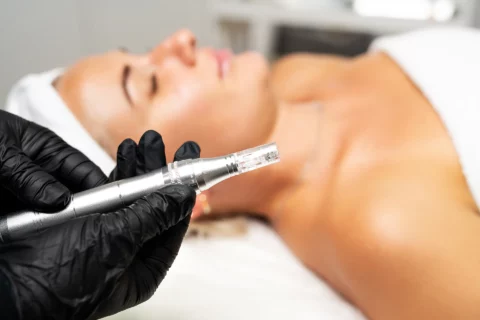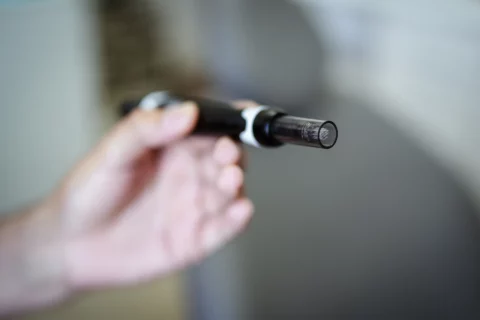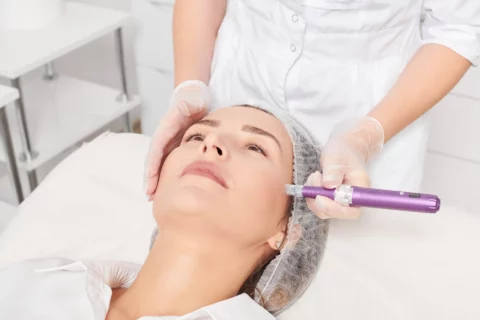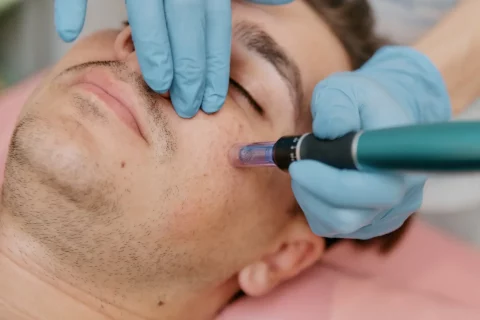Critical safety, sanitation, and contraindication protocols for microneedling pens include using sterile equipment, proper hand hygiene, avoiding treatment on active skin conditions, and following manufacturer guidelines. These protocols protect clients from infections and complications while ensuring the best possible results from microneedling treatments.
The moment a client reclines in your treatment chair for a microneedling session, they’re placing their most visible asset—their skin—into your hands. That trust carries significant responsibility.
With each micro-puncture created by the microneedling pen device, you’re not just initiating collagen production, you’re navigating the delicate boundary between therapeutic treatment and potential harm.
“I thought my face would never heal,” confided one client who sought corrective care after an improperly performed treatment elsewhere. Stories like this underscore why rigorous safety standards aren’t merely administrative hurdles—they’re the critical foundation separating transformative results from lasting damage.
While microneedling devices have made this powerful treatment more accessible than ever, their effectiveness hinges entirely on the practitioner’s commitment to meticulous safety, sanitation, and contraindication protocols.
Critical Safety Protocols: Protecting Your Clients from Harm

Pre-Treatment Assessment: The Foundation of Safety
Every successful microneedling procedure begins long before the device touches the client’s skin. A thorough consultation should include a detailed skin analysis, medical history review, and clear communication about the procedure’s process and potential risks. This preliminary step allows practitioners to identify any contraindications and set realistic expectations.
Professional-grade devices like the Dr. Pen series are powerful tools that require proper training to operate safely. Without proper assessment, clients may experience unnecessary complications or suboptimal results.
Preventing Technique-Related Complications
Microneedling efficacy depends heavily on proper technique. Common errors that can lead to complications include:
- Applying excessive pressure, which can cause unnecessary trauma and bleeding
- Using incorrect angles that tear rather than puncture the skin
- Performing too many passes over the same area, potentially causing scarring
- Inconsistent needle depth adjustments for different facial regions
These technical errors not only compromise results but can lead to tearing, scarring, infection, or uneven texture improvements. The difference between regenerative micro-injuries and damaging trauma often comes down to technique precision.
Minimizing Treatment Risks
All microneedling procedures carry inherent risks, including:
- Common reactions: temporary redness, swelling, pinpoint bleeding, and tenderness
- Less common risks: infection, hyperpigmentation, allergic reactions, and scarring
These risks can be substantially minimized through protocol adherence, proper aftercare guidance, and selecting appropriate candidates for treatment. Using high-quality devices and cartridges from reputable suppliers like Face Med Store also significantly reduces complication rates.
Practitioner Qualification: A Non-Negotiable Factor
The practitioner’s knowledge base directly impacts treatment safety. Qualified professionals possess:
- Comprehensive understanding of skin anatomy and physiology
- Technical mastery of device settings and appropriate needle depths
- Ability to identify contraindications and manage complications
- Proper certification and licensing according to local regulations
These qualifications aren’t merely credentials—they’re essential safeguards against potential harm.
Electrical Safety Considerations
Microneedling pens are electrical medical devices requiring specific safety precautions:
- Use only approved devices from reputable sources
- Regularly inspect equipment for damage to cords or components
- Keep devices away from water and moisture
- Follow manufacturer guidelines for charging and maintenance
Electrical safety isn’t optional—it protects both practitioners and clients from preventable accidents.
Depth Guidelines for Different Treatment Areas
Needle depth customization is crucial for both safety and efficacy:
| Superficial (0.25-0.5mm) | For product absorption and delicate areas |
| Medium (0.5-1.0mm) | Targets fine lines and mild texture concerns |
| Deeper (1.0-2.5mm) | For acne scarring and advanced concerns |
Areas with thinner skin (around eyes, forehead) require shallower penetration than thicker skin regions (cheeks, neck). Practitioners must adjust accordingly to prevent harm while maximizing results.
Sanitation Protocols: Preventing Infection and Cross-Contamination
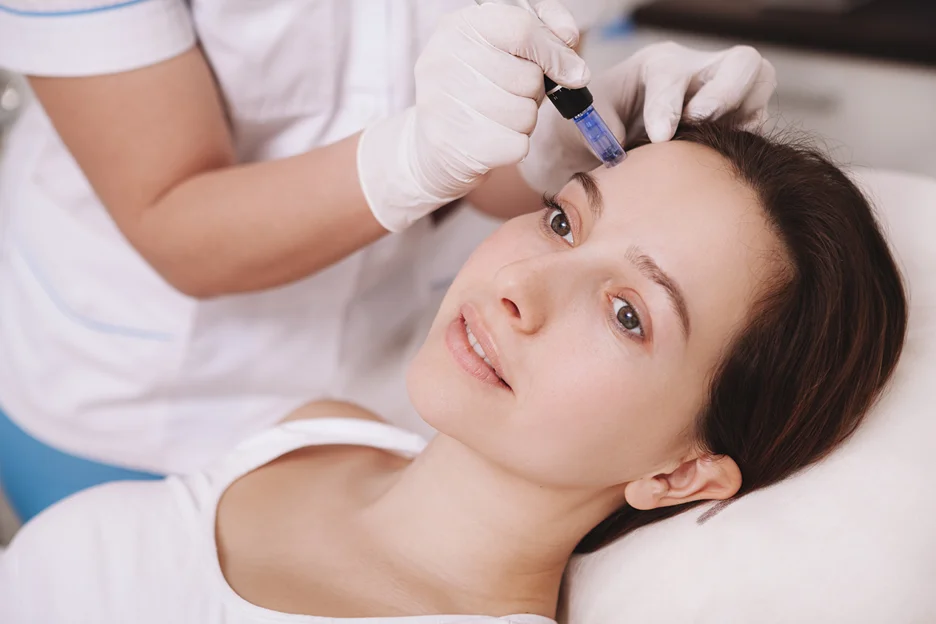
The Critical Importance of Aseptic Technique
Proper sanitation is non-negotiable in microneedling. The procedure creates thousands of micro-channels in the skin, each potentially serving as an entry point for pathogens. Rigorous sanitation protocols prevent:
- Bacterial, viral, and fungal transmission
- Cross-contamination between clients
- Post-procedure infections
These protocols protect not only the client receiving treatment but also the practitioner and future clients.
Device Maintenance and Disinfection
While needle cartridges should always be single-use, the microneedling pen itself requires proper maintenance:
- Clean external surfaces with medical-grade disinfectants after each use
- Follow manufacturer-specific guidelines for the microneedling pen device
- Store devices in clean, dust-free environments
- Regularly inspect for proper functioning
Proper maintenance extends device lifespan while ensuring continued safety for all clients.
The Single-Use Cartridge Imperative
Single-use cartridges are the industry standard for several critical reasons:
- They eliminate cross-contamination risk between clients
- Each treatment utilizes sharp, pristine needles for optimal results
- The practice upholds ethical standards and builds client trust
There is no acceptable method for reusing or re-sterilizing needle cartridges. Face Med Store offers various cartridge options to ensure practitioners always have appropriate supplies for all treatment types.
Personal Hygiene Requirements
Both practitioners and clients must adhere to proper hygiene protocols:
For practitioners:
- Thorough hand washing before treatment and between clients
- Fresh gloves for each client
- Clean attire and hair secured away from the treatment area
For clients:
- Arrive with clean skin free of makeup
- Remove jewelry from the treatment area
- Follow pre-treatment preparation instructions
Creating an Optimal Treatment Environment
The treatment space itself plays a crucial role in procedure safety:
- Clean, well-lit room with controlled access
- Non-porous, easily disinfected surfaces
- Proper ventilation
- Designated clean and contaminated areas
These environmental factors create a foundation for safe, professional-grade treatments.
Contraindication Protocols: Knowing When to Say No
Absolute Contraindications
Certain conditions absolutely preclude microneedling treatment:
- Active infections (herpes, bacterial infections, fungal conditions)
- Inflammatory skin conditions in the treatment area (acne, rosacea, eczema, psoriasis)
- History of keloid scarring
- Blood clotting disorders or anticoagulant medication
- Uncontrolled diabetes
- Cancer or recent chemotherapy/radiation
Proceeding with treatment in these cases creates unacceptable risk and demonstrates a lack of professional judgment.
Relative Contraindications Requiring Clinical Judgment
Some conditions require careful assessment before proceeding:
- Certain medications (high-dose NSAIDs, oral corticosteroids)
- Recent injectables (wait 2+ weeks after fillers/neuromodulators)
- Autoimmune diseases (assess disease activity and medication status)
- History of poor wound healing
- Recent sun exposure or sunburn
These situations may permit modified treatment approaches or necessitate postponement, depending on individual assessment.
Active Skin Conditions: A Critical Boundary
Microneedling should never be performed on skin with active:
- Acne (risk of spreading bacteria throughout the face)
- Eczema or psoriasis (risk of triggering severe flares)
- Rosacea in inflammatory phase (risk of exacerbation)
- Open wounds or recent surgery sites
Treatment can resume once conditions are controlled and the skin barrier is intact.
Special Population Considerations
Pregnancy and nursing generally contraindicate microneedling due to:
- Hormonal fluctuations that affect skin healing
- Increased skin sensitivity during these periods
- Limited research on safety for these populations
The conservative approach is to postpone treatment until after pregnancy and breastfeeding.
Medication and Medical History Screening
A thorough intake should screen for:
- Accutane use (current or within past 6 months)
- Blood thinners
- Immunosuppressants
- History of cold sores (prophylactic antivirals may be needed)
- Recent cosmetic procedures or surgeries
These factors may necessitate treatment modification or deferral.
Fitzpatrick Scale Considerations
Darker skin types (Fitzpatrick IV-VI) require additional precautions:
- Increased risk of post-inflammatory hyperpigmentation
- Potentially beneficial pre-treatment with tyrosinase inhibitors
- Conservative approach to treatment depth and intensity
- Rigorous post-treatment sun protection
These adaptations help ensure safe, effective treatments for all skin types.
Beyond the Session: Ensuring Optimal Healing and Results
Setting Realistic Expectations
Preparing clients for the treatment experience builds trust and reduces anxiety:
- Duration (typically 30-60 minutes including numbing)
- Sensation (from mild tingling to moderate discomfort)
- Immediate appearance (erythema is expected and desired)
Normal Healing Response
Educate clients about typical post-treatment reactions:
- Redness and mild swelling (24-72 hours)
- Potential dryness and light flaking (days 3-5)
- Gradual improvement as collagen production increases (weeks 4-6)
Essential Aftercare Instructions
Proper healing requires diligent aftercare:
- Gentle cleansing with mild, non-exfoliating cleansers
- Hydration with approved serums and moisturizers
- Diligent sun protection (minimum SPF 30)
- Avoiding makeup for 24 hours, harsh products for 3-7 days
- No swimming, saunas, or strenuous exercise for 24-48 hours
When to Seek Medical Attention
Clients should contact their provider immediately if they experience:
- Signs of infection (increasing redness, warmth, pus, fever)
- Severe pain lasting beyond expected timeframe
- Unusual swelling or potential allergic reactions
- Any concerns about healing progression
Conclusion

The difference between mediocre microneedling and truly transformative results lies in the practitioner’s commitment to clinical excellence. By maintaining rigorous safety, sanitation, and contraindication protocols, aesthetic professionals not only protect their clients but also elevate the entire field.
Face Med Store supports this commitment to excellence by providing premium microneedling devices like the Dr. Pen series, high-quality disposable cartridges, and educational resources for ongoing professional development. When practitioners combine these quality tools with uncompromising safety standards, they create the foundation for consistently remarkable results and a thriving aesthetic practice.

